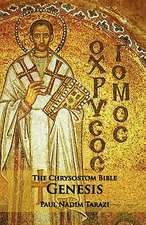The Art of War: Annotated Edition: Alma Classics Evergreens
Autor Tzu Sun Traducere de B.T. Goulden Limba Engleză Paperback – 30 sep 2020
| Toate formatele și edițiile | Preț | Express |
|---|---|---|
| Paperback (4) | 37.85 lei 3-5 săpt. | +4.61 lei 4-10 zile |
| Alma Books COMMIS – 30 sep 2020 | 37.85 lei 3-5 săpt. | +4.61 lei 4-10 zile |
| Penguin Books – 30 noi 2005 | 58.12 lei 24-30 zile | +27.40 lei 4-10 zile |
| Penguin Books – 2 sep 2009 | 68.55 lei 24-30 zile | +23.86 lei 4-10 zile |
| BASIC BOOKS – 11 feb 1994 | 72.53 lei 3-5 săpt. | +35.42 lei 4-10 zile |
| Hardback (1) | 82.29 lei 24-30 zile | +32.87 lei 4-10 zile |
| Penguin Books – 5 noi 2014 | 82.29 lei 24-30 zile | +32.87 lei 4-10 zile |
Din seria Alma Classics Evergreens
-
 Preț: 45.33 lei
Preț: 45.33 lei -
 Preț: 51.87 lei
Preț: 51.87 lei -
 Preț: 45.49 lei
Preț: 45.49 lei -
 Preț: 44.48 lei
Preț: 44.48 lei -
 Preț: 46.81 lei
Preț: 46.81 lei -
 Preț: 51.12 lei
Preț: 51.12 lei -
 Preț: 45.48 lei
Preț: 45.48 lei -
 Preț: 46.33 lei
Preț: 46.33 lei -
 Preț: 51.69 lei
Preț: 51.69 lei -
 Preț: 46.81 lei
Preț: 46.81 lei -
 Preț: 56.50 lei
Preț: 56.50 lei -
 Preț: 45.00 lei
Preț: 45.00 lei - 8%
 Preț: 40.82 lei
Preț: 40.82 lei -
 Preț: 46.75 lei
Preț: 46.75 lei -
 Preț: 38.65 lei
Preț: 38.65 lei -
 Preț: 45.27 lei
Preț: 45.27 lei -
 Preț: 55.71 lei
Preț: 55.71 lei -
 Preț: 64.07 lei
Preț: 64.07 lei -
 Preț: 45.70 lei
Preț: 45.70 lei -
 Preț: 37.99 lei
Preț: 37.99 lei -
 Preț: 44.25 lei
Preț: 44.25 lei -
 Preț: 56.47 lei
Preț: 56.47 lei -
 Preț: 45.36 lei
Preț: 45.36 lei -
 Preț: 53.67 lei
Preț: 53.67 lei -
 Preț: 46.04 lei
Preț: 46.04 lei -
 Preț: 51.75 lei
Preț: 51.75 lei -
 Preț: 51.56 lei
Preț: 51.56 lei -
 Preț: 68.71 lei
Preț: 68.71 lei -
 Preț: 53.10 lei
Preț: 53.10 lei -
 Preț: 59.57 lei
Preț: 59.57 lei
Preț: 37.85 lei
Nou
7.24€ • 7.47$ • 6.12£
Carte disponibilă
Livrare economică 10-24 februarie
Livrare express 24-30 ianuarie pentru 14.60 lei
Specificații
ISBN-10: 1847497462
Pagini: 112
Dimensiuni: 128 x 198 x 12 mm
Greutate: 0.11 kg
Editura: Alma Books COMMIS
Colecția Alma Classics
Seria Alma Classics Evergreens
Caracteristici
Notă biografică
Recenzii
Cuprins
Introduction
A Note on the Text
Suggestions for Further Reading
A List of Chinese Commentators
Cronologies
Dyanasties
Historical Events
The Art of War
Chapter 1: Making of Plans
Chapter 2: Waging of War
Chapter 3: Strategic Offensive
Chapter 4: Forms and Dispositions
Chapter 5: Potential Energy
Chapter 6: Empty and Full
Chapter 7: The Fray
Chapter 8: The Nine Changes
Chapter 9: On the March
Chapter 10: Forms of Terrain
Chapter 11: The Nine Kinds of Ground
Chapter 12: Attack by Fire
Chapter 13: Espionage
The Art of War with Commentary
Chapter 1: Making of Plans
Chapter 2: Waging of War
Chapter 3: Strategic Offensive
Chapter 4: Forms and Dispositions
Chapter 5: Potential Energy
Chapter 6: Empty and Full
Chapter 7: The Fray
Chapter 8: The Nine Changes
Chapter 9: On the March
Chapter 10: Forms of Terrain
Chapter 11: The Nine Kinds of Ground
Chapter 12: Attack by Fire
Chapter 13: Espionage



















